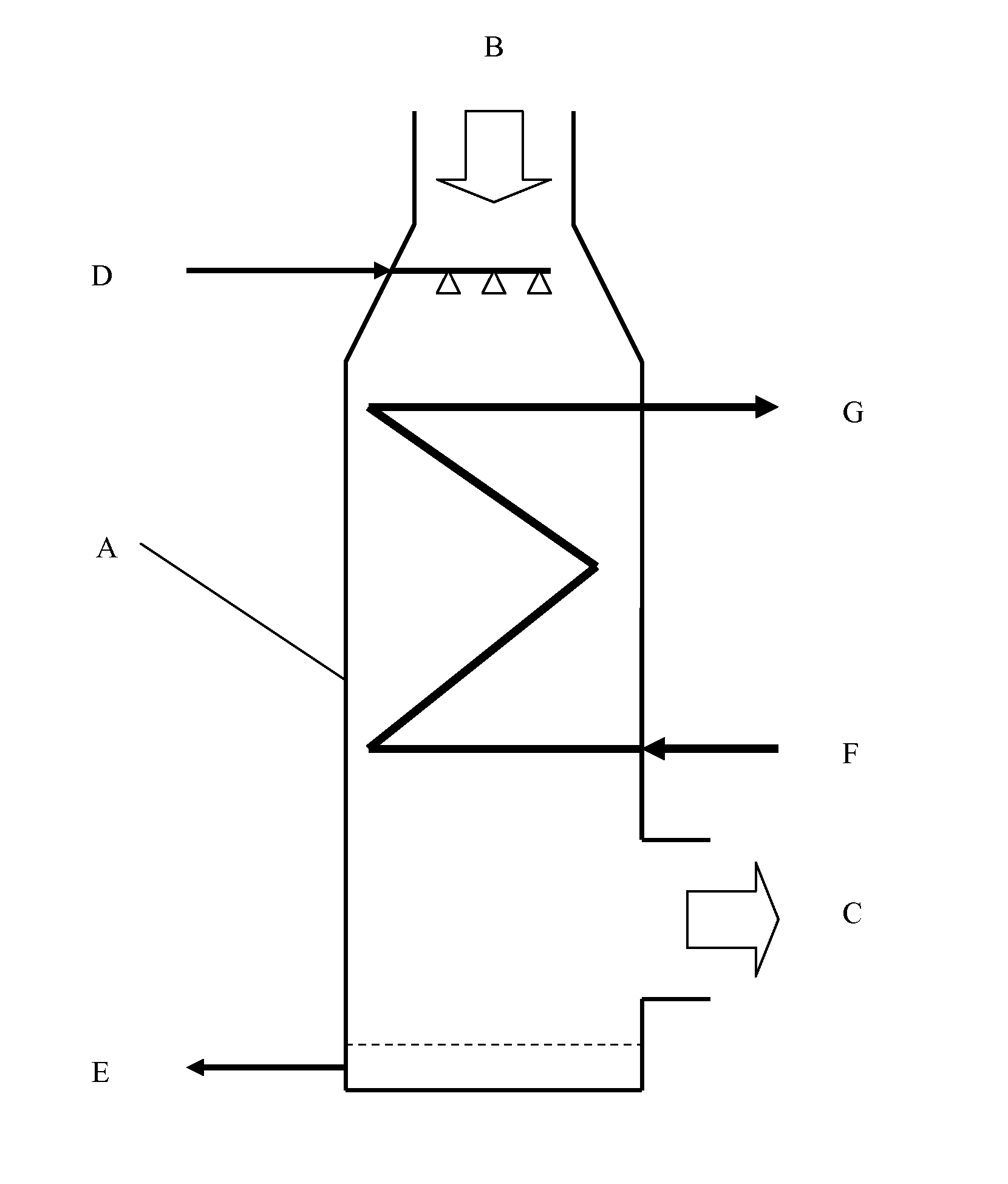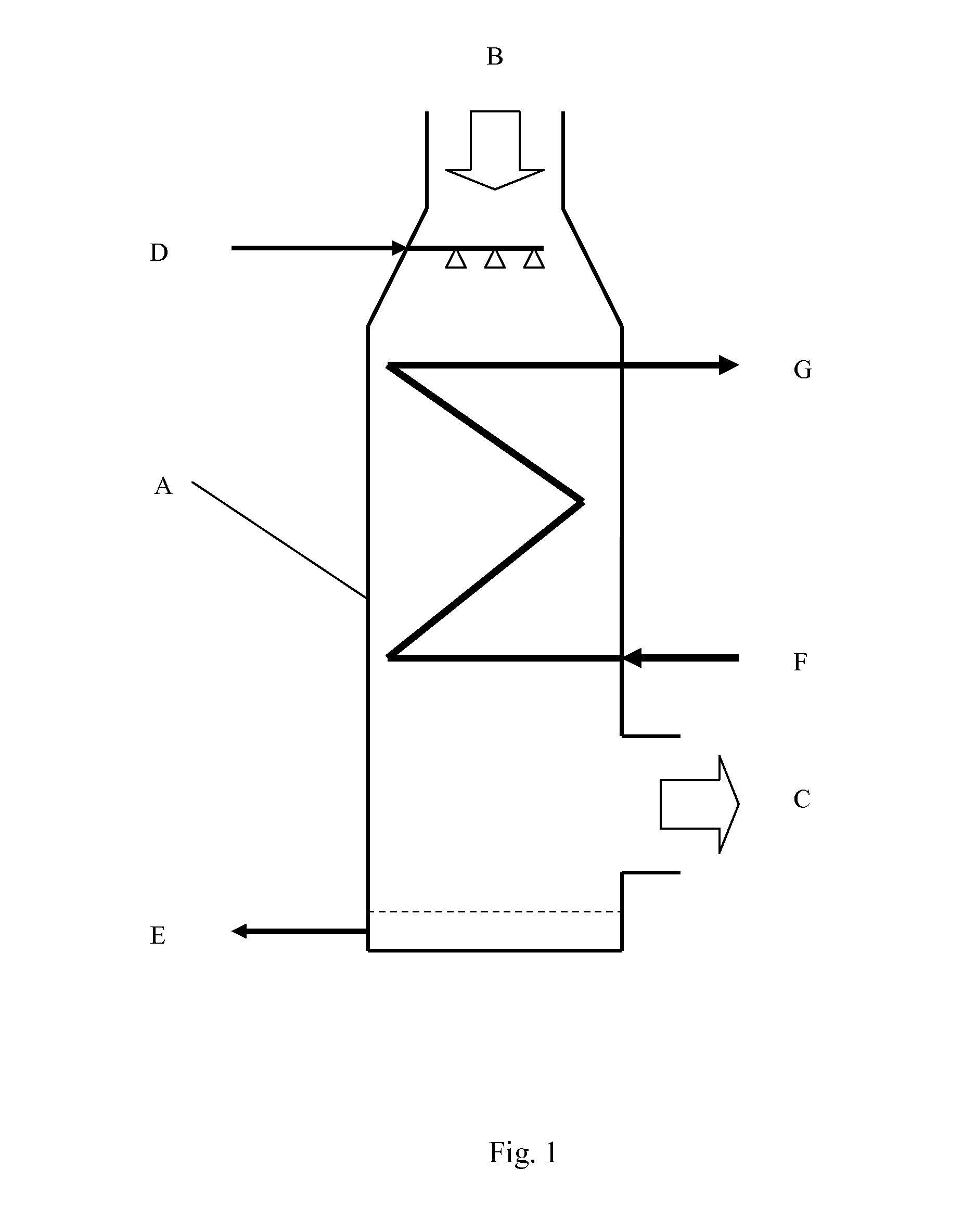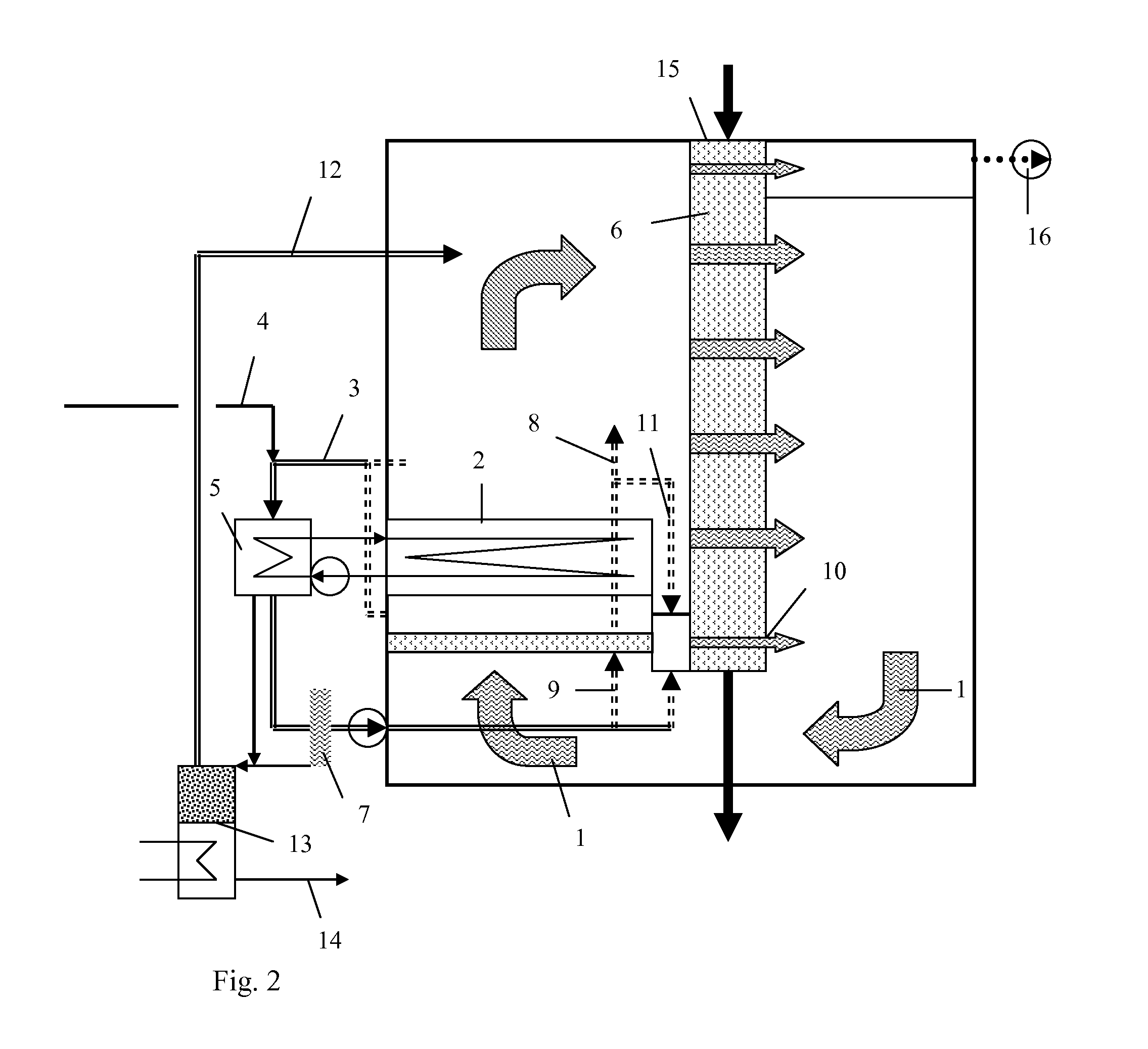Method in treating solvent containing gas
a solvent and gas technology, applied in the field of solvent treatment, can solve the problems of limited and difficult liquid form, high energy consumption, and high cost of contact apparatus, and achieve the effects of strong physical action, positive health effects, and great solubility
- Summary
- Abstract
- Description
- Claims
- Application Information
AI Technical Summary
Benefits of technology
Problems solved by technology
Method used
Image
Examples
embodiments
1. Drying Process
[0078]The solvent is absorbed in a solution consisting of an absorbent with a strong affinity to the solvent and good solubility in the same. If the solvent is water such substances are called hygroscopic. Known hygroscopic substances are mineral salts, alcohols, glycols, and salts or organic acids, such as formate and acetate. Salts of lithium sodium, potassium, calcium and magnesium are frequently used, since they have a good solubility and strong affinity to water. Even if for the sake of simplicity water and hygroscopic substances are discussed in the following description, the invention thus comprises all other possible combinations of said kind.
[0079]When humid exhaust gas is contacted with the absorption solution in the inlet of a heat exchanger of a suitable kind, the absorption is started with vapour and the temperature of the two media rise to a level close to the equilibrium temperature. When the media come into contact with the cooling surfaces of the h...
PUM
 Login to View More
Login to View More Abstract
Description
Claims
Application Information
 Login to View More
Login to View More - R&D
- Intellectual Property
- Life Sciences
- Materials
- Tech Scout
- Unparalleled Data Quality
- Higher Quality Content
- 60% Fewer Hallucinations
Browse by: Latest US Patents, China's latest patents, Technical Efficacy Thesaurus, Application Domain, Technology Topic, Popular Technical Reports.
© 2025 PatSnap. All rights reserved.Legal|Privacy policy|Modern Slavery Act Transparency Statement|Sitemap|About US| Contact US: help@patsnap.com



